The Genius of Marie Curie

It's hard to win a Nobel Prize.
It's harder to win two.
It's so hard to win two in different scientific fields that only one person has done it.
And it's unimaginably hard to do all this when you're a female migrant in 1900s France.
Poland to Paris
Maria Skłodowska was born in Poland in 1867 in a country where laboratory science was outlawed in schools and women were forbidden from attending university. A keen scientist from a young age Maria was undeterred by the obstacles, joining an underground school that admitted female students; the ‘Flying University’ of Warsaw,
Recognising the limited opportunities in her beloved Poland she enrolled at the University of Paris in 1891, studying by day to earn two degrees in physics and mathematics and tutoring every evening to make ends meet.

Following graduation she was introduced to physicist Pierre Curie. Drawn together by their shared passion for science Pierre proposed but was turned down as Marie saw her future in Poland. Leaving Paris she was informed by the University of Warsaw that she, as a female, would never be allowed a professorship whereupon she returned to Paris and married Pierre.
Radioactivity
In 1896 the physicist Henri Becquerel noticed that when uranium salts were placed on a photographic plate it would leave a dark shadow. Becquerel proposed that the rock was emitting rays, thus discovering radioactivity. Inspired, Curie decided to investigate uranium for her thesis

Tests by Curie on uranium to alter its physical and chemical make up failed to diminish the effect of the radiation leading to Curie’s first breakthrough - she theorised that something within the atom was emitting the rays, disproving the centuries old idea that atoms are indivisible.
New Elements

Curie noticed that the uranium rich ore pitchblende was four times more radioactive than pure uranium and wondered if this was due to an even more radioactive element present within. Tonne after tonne of the ore arrived by horse and cart at her unventilated shed and, using basic equipment and next to no safety considerations, she analysed and tested it leading to the discovery of two new elements in 1898; Polonium, named after her native Poland and Radium.
Nobel Prizes

Recognising the magnitude of the discovery of radioactivity, in 1903 the Nobel committee sought to honour Pierre and Becquerel, omitting Marie from the nomination. Pierre launched a complaint and Marie was added, becoming the first woman to win a Nobel Prize.
In 1906, Pierre would die tragically in a traffic accident, devastating Marie. The University of Paris, planning to give a professorship to Pierre instead offered it to Marie, making her the first woman to become a professor at the institute.
She won her second Nobel Prize, this time for chemistry, in 1911 for the discovery of polonium and radium. The archaic attitudes of the time were evidenced by Svante Arhenius, the Swedish chemist and head of the Nobel committee, who attempted to prevent her attendance at the ceremony.
Later Years
Curie went on to found research institutes in Paris and Warsaw, and collected numerous scientific accolades and awards for her work. However unbeknownst to her, years of directly handling highly radioactive materials had adverse effects on her health. Years spent in a poorly ventilated shed, carrying radium in her pockets, and working with highly carcinogenic materials, led to her developing a blood disorder, of which she died of in 1937 at the age of 66.
Her legacy was both scientific and societal. Overcoming countless barriers she became the first of many prominent female scientists in the 20th century, including her own daughter, who won her own Nobel Prize in chemistry.








Leave a comment